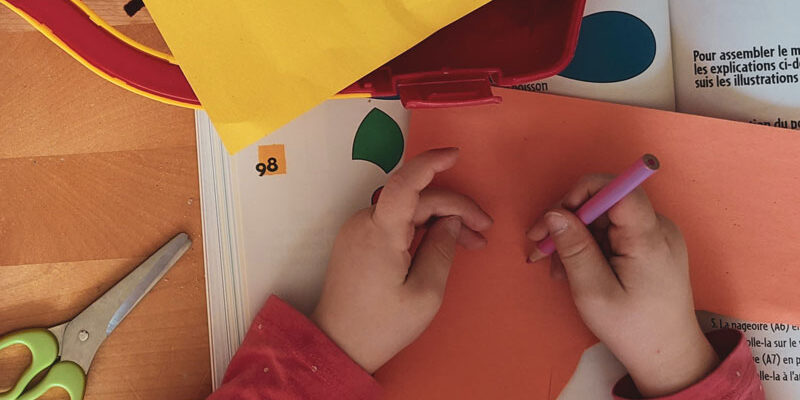
SEND tutor, Keone Wales, joined the chat to share his experience and advice. Here are some of the topics that were covered:
The key thing to note when working with students with any kind of specific learning difference or sensory processing issue, is that we are often asking our student to sit down and learn information that they find challenging. Whether it be a dyslexic student tackling literacy, or an AH(H)D student working on a topic that they find ‘boring’ or out of their comfort zone; what often unites these students is a fear of failure. This fear of is often accompanied by a lack of self-confidence due to past, often negative, experience in a classroom environment.
This can happen for a variety of reasons that include having a processing difficulty that impedes their learning; feeling forced by a parent to have the extra lessons; or feeling self-conscious and unwilling to be ‘put on the spot’ in a 1:1 situation and so on. Some of the ideas we discussed today were:
• Make sure lesson starters are engaging and remove any barriers to learning. For example, avoid asking a dyslexic student who struggles with reading to immediately read a text aloud to you. They’ll most certainly feel anxious and self-conscious. Consider other options such as: showing a picture of a topic and asking them to describe it, or talk about what they already know on the topic. Use open ended questions, so you are not met with a barrage of one-word answers. Where possible use a game to lighten the mood; using clip art images to do a ‘spot the difference’, or ‘how are these images connected?’, to open a conversation.
• Students (especially boys) sometimes like a competitive element to their learning. Working through timed tasks, competing with each other and rewarding with stickers, appeals to some students. This provides them with the added motivation to learn.
• Sometimes ‘bigger picture’ chats don’t work. When we are explaining why they need to pass these particular exams for example, it can be too far away for some younger students to care about. For others, seeing a clear path ahead and a bigger reason for the work can be a big motivator.
• Use a traffic light system with your student so they can express how they’re feeling (use coloured balls, printed circles etc): green for feeling good and so on. This opens up a conversation about why they are feeling that way (good or bad), and allows them to process their feelings and be ready to focus on learning.
• Humour can be so useful in these situations, whether it be a YouTube clip, a comic strip or a visual – anything to lighten the mood and engage your student.

• It can be useful to have more frequent lessons of half an hour rather than longer sessions.
• Ensure the student enjoys success in every lesson and spend a few minutes at the end of the session planning what you will be covering in the next. This removes the stress of the unknown. Planning lessons together gives the student some autonomy and helps them feel in control
• Jonathan, our AD(H)D and study skills expert, commented on the importance of encouraging or experimenting with the use of music for self-study. Many students find certain types of music calming/stimulating and this helps them to focus. Try different genres of music, but often Baroque music helps. He explained that music provides a ‘safe space’ for a student – also relevant to students on the autistic spectrum.
• Jonathan also mentioned a great ‘oral only’ method for language learning that he has recently been using with one of his SEND students.
This is where we revisit the idea of joining the student on their learning journey. In this instance we mean, quite literally. Keone, our SEN specialist in ASC, says we shouldn’t be trying to force a child to do what they don’t wish to do. This situation occurs when a student is indicating they need a safe space. What he’s done in the past is to join the student under the table and conduct the lesson there. Similarly, when Max, a dyslexia tutor, worked with a student who was hiding behind a cupboard at the start of the lesson. Max played Lego with him for a few minutes until he was ready to learn.
As tutors, we need to feel confident in using alternative approaches to teaching. Whether it be taking a walk with a student rather than staying in one room; or using game-based learning and alternative lessons ideas to engage and motivate students. Parents may well question this, so always explain to them why you are approaching a lesson in this way.
We are all diverse and complex in how we think and process information. There is never a ‘one size fits all’, so be creative and experiment with your tutoring.
If you’re an SEND tutor in need of any advice about students you are working with, get in touch and join us next time we have a tutor chat. Sharing our ideas and experience is so valuable and give us strategies that are “crucial for some, useful for all”!
Sarah Cox, SEND Consultant
Related:
SEN Tutoring: What I wish I’d known Earlier
Dyscalculia Masterclass: Tools & Techniques
Autism and Communication
AD(H)D Moving Towards Productivity
Autism Acceptance Week: Be Part of the Change